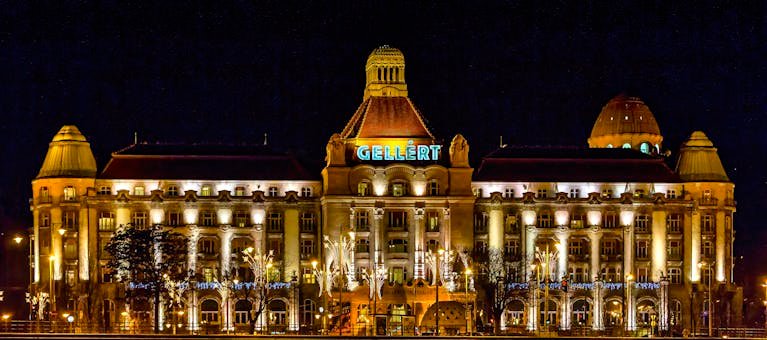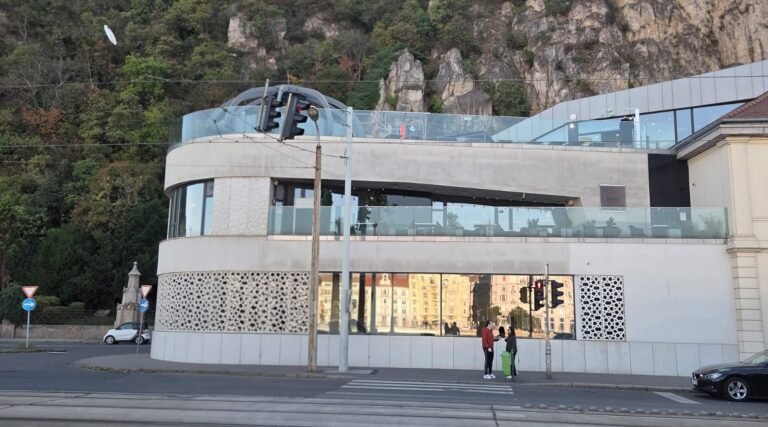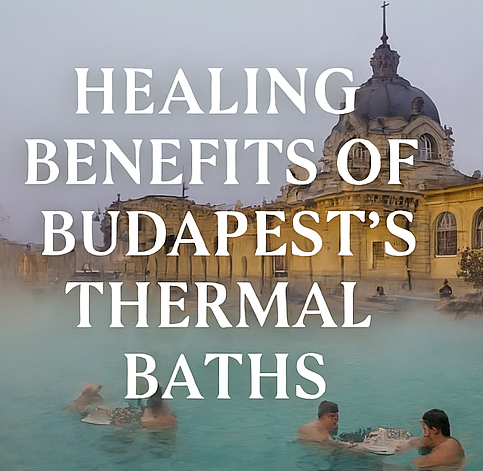The Healing Benefits of Budapest’s Thermal Baths
On winter mornings in City Park, steam unfurls like silk above century‑old pools while locals slide into mineral‑rich water, shoulders dropping, breath slowing. This is Budapest—the City of Spas—where more than 100 natural springs well up beneath palaces of tile and light, feeding an everyday ritual that blends wellness, architecture, and social life in a way few cities can match.
Why Budapest’s Thermal Springs Are Different
Budapest sits atop a geological fault line; within the city limits, 100+ springs (often cited as 120–123) deliver roughly 70 million liters of thermal water daily, with source temperatures typically ranging 21–78 °C (70–172 °F)—a spectrum that underpins everything from cool plunge pools to deeply warming soaks. These waters carry a signature mineral profile—notably calcium, magnesium, sulfate, sodium, and bicarbonate—long associated with musculoskeletal relief and skin benefits.
The therapeutic science (in plain language)
Heat + hydrostatic pressure: Warm water dilates blood vessels and the gentle pressure of immersion helps venous return, supporting circulation and easing muscular tension—one reason bathers often report feeling both relaxed and limber after a session. Evidence from randomized and controlled trials suggests benefits for pain and mobility in certain rheumatic conditions, though the certainty of evidence ranges from promising to low depending on the review.
Mineral exposure: Contact with dissolved minerals (e.g., calcium, magnesium, sulfates) and, in some baths, fluoride and metaboric acid, may complement heat therapy. Clinical literature on balneotherapy indicates potential improvements in quality of life and pain among people with osteoarthritis and rheumatoid arthritis, even as reviewers call for more rigorous trials.
A gentle note: If you’re pregnant, have cardiovascular disease, uncontrolled blood pressure, or acute skin conditions, talk with your clinician before soaking, and favor shorter sessions (10–20 minutes) in hotter pools with hydration breaks. These are standard precautions in European spa medicine and local bath etiquette. (source)

Stories from the Water: Moments of Mindfulness & Reset
“I came for the views and stayed for the ritual,” a recently arrived expat told me after her third week of pre‑work soaks at Széchenyi. She described how alternating between a 38 °C thermal pool and a brief cold plunge “quieted the mental tabs” that never seemed to close in a new city. Another long‑timer swears by Saturday dawn dips at Rudas: “Standing under the domed ceiling with light filtering through tiny glass portholes feels like meditation I don’t have to force.”
These reflections echo what many bath‑goers report: mindful breathing comes naturally, sleep quality improves, and the city’s pace softens with each visit. (For a roundup of expat observations and practical tips compiled for this topic and others see our Guide)
A Living Culture: From Roman Thermae to Ottoman Domes to Art Nouveau Palaces
Bath‑going here is cultural immersion as much as wellness routine. The Romans built the first complexes in Aquincum (northern Budapest), the Ottomans layered in domed hammam architecture in the 16th century, and the Austro‑Hungarian era produced the grand palace baths we admire today.
- Rudas (16th‑century core) is a surviving Ottoman bath with an octagonal pool beneath a 10‑meter dome—today paired with a panoramic rooftop pool over the Danube.
- Gellért (1918) embodies Art Nouveau elegance—mosaics, Zsolnay ceramics, and stained glass—and historically drew connoisseurs of both beauty and balneology. (Planning note: Gellért Baths are slated to close for a multi‑year renovation from Oct 1, 2025; check current status before you go.)
- Széchenyi (1913) is one of Europe’s largest medicinal bath complexes, famous for its outdoor pools where locals play chess amid winter steam.
Culturally, Budapest’s bathhouses are also social salons—places to read, chat softly, people‑watch, or, on select nights, dance. The city’s best‑known mash‑up of tradition + nightlife is Sparty, a Saturday‑night visual‑music spectacle staged in Széchenyi’s steaming pools.
Where to Soak: Three Icons of Budapest Thermal Baths
Széchenyi Thermal Bath: Neo-Baroque Grandeur Meets Everyday Wellness
When you step through Széchenyi’s ornate gates, you enter Europe’s largest medicinal bath complex, a sanctuary where healing benefits of Budapest thermal baths are on full display. Fed by two deep thermal wells (St. Stephen Well No. II), its waters brim with calcium, magnesium, sulfate, and bicarbonate, minerals known to ease joint pain, improve circulation, nourish the skin and traditionally recommended for post‑injury rehabilitation too.
Why it’s special:
- Outdoor pools in all seasons: Imagine soaking in 27–38 °C (81–100 °F) water while snowflakes melt on your shoulders—a sensory contrast that invigorates the body and calms the mind.
- Chess in the steam: A cultural icon—locals perched at poolside tables, strategizing moves as mist curls around them.
- Wellness extras: Saunas, steam chambers, and whirlpool jets amplify relaxation and mobility benefits.
Insider tip: Visit at sunrise for golden light over the colonnades, or after dark when the pools glow under floodlights. Pair your soak with mindful breathing for maximum stress relief.
Sensory snapshot: Steam ribbons curl into the night as floodlit façades glow; in the “adventure” pool, whirl jets thrum at your calves while chess games carry on at the edge
Gellért Baths: Art Nouveau Elegance and Therapeutic Rituals
Gellért isn’t just a bath—it’s a living museum of wellness. Beneath stained-glass skylights and Zsolnay mosaics, you’ll find pools infused with minerals that support skin health and soothe muscular tension. Historically, the complex offered inhalation therapies and hydro treatments alongside leisure bathing.
Healing highlights:
- Mineral-rich waters: Calcium and magnesium help restore bone and muscle balance, while sulfates aid detoxification.
- Temperature therapy: Pools range from 35–40 °C (95–104 °F), ideal for gentle heat therapy that promotes circulation and stress relief.
- Historic treatments: Gellért pioneered inhalation and mud therapies, echoing its legacy as a medical spa.
Planning note: The bath is undergoing a major restoration from October 2025, so check reopening dates before you go. When it returns, expect even more immersive wellness experiences.
Rudas Baths: Ottoman Soul with a Modern Skyline Twist
For those seeking authentic healing benefits of Budapest thermal baths, Rudas offers a rare blend of 16th-century Ottoman architecture and contemporary rooftop luxury.
Why wellness seekers love it:
- Turkish dome pools: Warm waters (28–42 °C) under a star-lit dome create a meditative atmosphere that encourages mindfulness.
- Mineral drinking cures: Unique to Rudas, mineral‑rich waters here (from the Hungária, Attila, and Juventus springs) are used for both bathing and drinking cures in a dedicated hall.
- Panoramic rooftop pool: Float above the Danube with views of Gellért Hill—a sensory experience that fuses relaxation with awe.
Insider tip: Try a sunrise visit for serenity, or book a weekend evening for the city lights shimmering on the river.

So…Do the Baths Actually Heal?
Short answer: They can help—and they certainly restore.
- For rheumatoid arthritis, a 2021 systematic review found statistically significant improvements in quality of life with balneotherapy (typical protocols: 20‑minute sessions at 35–38 °C), while acknowledging heterogeneity in methods.
- For broader rheumatology indications, a 2023 meta‑analysis reported reductions in pain and gains in quality of life, albeit with very low certainty due to risk of bias and inconsistency across trials.
- Earlier work on osteoarthritis suggested small‑to‑moderate benefits versus no treatment, again tempered by study quality.
In practice, many travelers and locals use the baths for stress relief, sleep support, and mindful downtime—outcomes that are meaningful even when clinical endpoints are modest. Pair your soak with breathwork and short hot‑cold cycles to enhance circulation and calm. (These crowd‑tested strategies echo both traditional spa protocols and contemporary wellness advice.
Practical Tips for Visitors (Wellness‑wise and Culture‑savvy)
What to bring & wear
- Swimsuit + flip‑flops are mandatory; bring a towel (rentals available at some baths). Swim caps are required in lap pools.
- Pack a water bottle and rehydrate often—thermal sessions can be dehydrating.
How to bathe like a local
- Shower before pools, keep voices low, and respect quiet zones—baths are for unwinding.
- Alternate hot (10–20 min) and cool (1–2 min) dips; limit total time in very hot pools and rest in between.
- Book ahead for popular baths and for massages; weekday mornings are calmest.
- Rudas still observes gender‑specific hours in part of its historic Turkish section; weekends and most modern areas are mixed. Check the day’s schedule.
- Curious about Budapest’s party side? Try Sparty—a Saturday‑night bath party at Széchenyi (Feb–Dec). Dress code is swimwear; plan for a late night.
Health & safety notes
- If you have heart conditions, uncontrolled hypertension, are pregnant, or have open wounds/active skin flare‑ups, consult your doctor and choose milder pools.
- Watch your footing—flip‑flops reduce slips on wet stone.
Beyond the Soak: A Cultural Route Through Europe’s Spa Heritage
Budapest is a marquee stop on the European Route of Historic Thermal Towns—a Council of Europe Cultural Route that links iconic spa cities where architecture, nature, and water meet. It’s a reminder that thermal culture is not a trend; it’s a centuries‑old way of living well.
Insider’s path: Start your trip with a morning at Széchenyi, pause for coffee under the colonnades, then walk to Heroes’ Square; on day two, pair Rudas at sunrise with a hill walk on Gellért; when Gellért Baths reopen post‑renovation, return for pure Art Nouveau reverie
Closing Soak: An Invitation to Pause
In Budapest, wellness isn’t tucked away in a clinic or a retreat—it fills the city like warm light. Slip into the water, watch the steam rise from an Ottoman dome or an Art Nouveau nave, and let time dilate. Whether you come for healing benefits, spa culture, or simple mindful travel, the baths offer a sanctuary you can step into any day of the week.
Ready to take the plunge? Plan your first (or next) soak at one of the city’s iconic Budapest spas, then tell us: Which bath moved you—and why? Share your experience or questions below; I’m happy to help you design a wellness‑rich itinerary.

